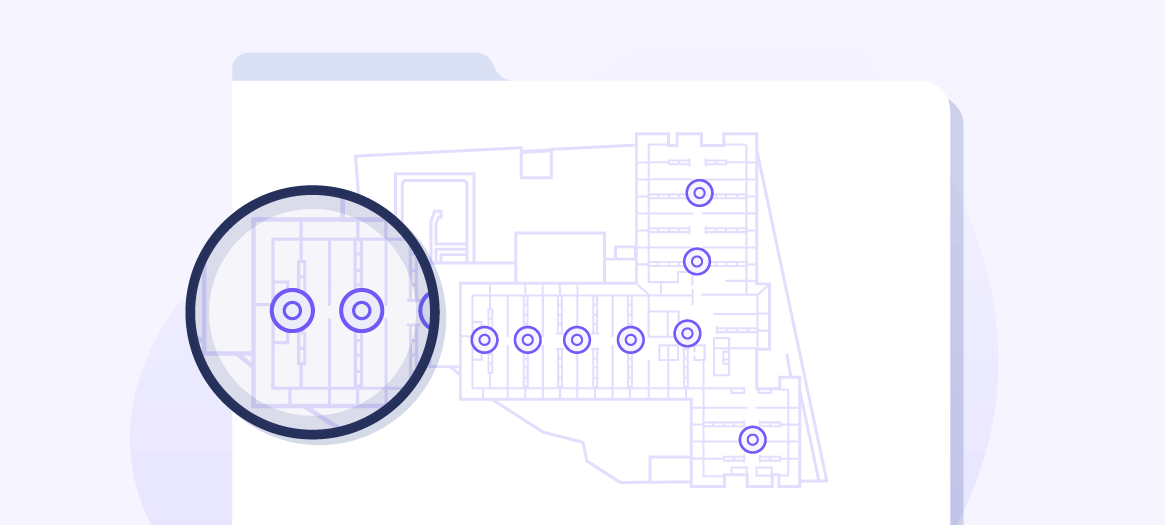
Technology 5:25 Min read
Four 5G systems scenarios in a hotel.
We discuss several scenarios to see how a hotel property could take on 5G technology in its facilities.
We cover the 5G deployment scenarios, related to types of systems can be implemented in a hotel. From the most unlikely scenario to the one that is likely to be the most feasible both economically and in terms of infrastructure.
CASE 1: 100 % 5G HOTEL
This would be a hotel that wants 5G coverage throughout the property. Although this scenario is highly unlikely, we think it is worth analysing it to understand the complexity and high cost that this would entail, even in a newly built hotel.
The first thing to bear in mind in this case is that the 5G signal has very low penetration and a short range, so we will be forced to install many access points to have full coverage.
For example, in the following case study, in a room with a bathroom and a terrace, installing up to 3 access points may be necessary. While before we had a single access point for every 4 rooms, now we will need 3 access points for each room and much more electronics to service each new point.
But it is not only the increase in hardware, we will also have to deal with construction work. Access points need to be wired and in order to do so we must:
- Open electrical logs in ceilings, including ditches if there is no false ceiling.
- Open passages between walls to access the bathroom and terrace.
- Widen the passages between the corridor and rooms when more cables are needed.
- Improve the links between the distribution points on the floors and the main distributor.
The cable volume on each floor increases considerably and considering that the data trunking should be separate from the electrical trunking, it may be necessary to extend the existing trunking.
Example floor 1 of a current WiFi installation:
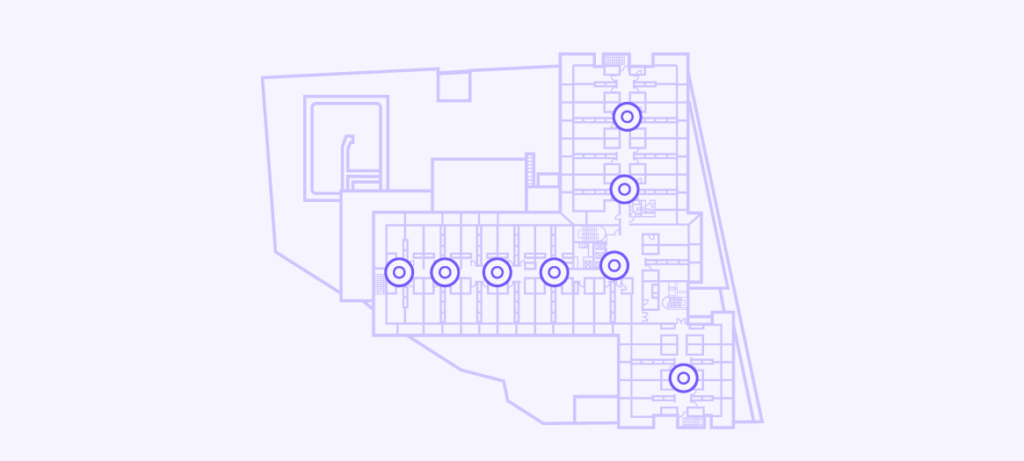
Example floor 1 if we move from 8 WiFi APs to 150 5G antennas (3 per room): this would be the worst case, 3 antennas (Ericsson Radio Dot 5G model), per room. But in the best-case scenario it would be 1 antenna per room (50 per floor).
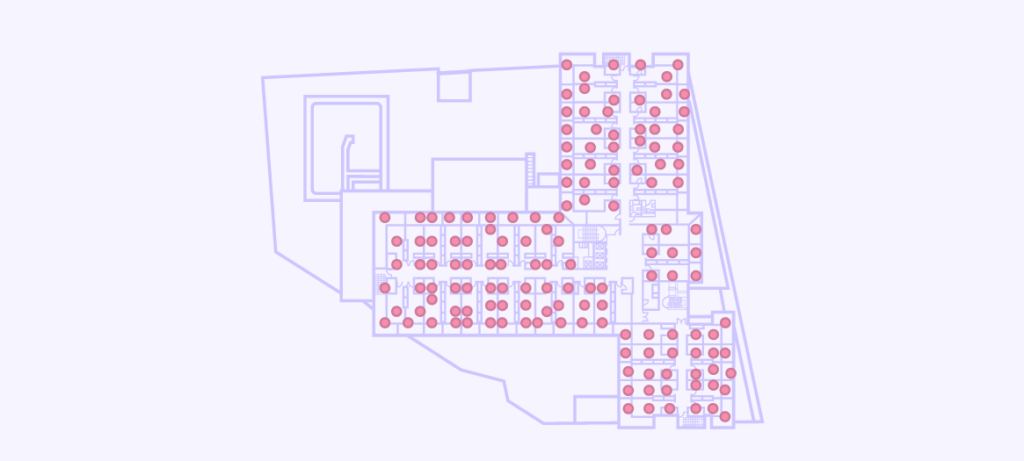
INSTALLATION PROJECT
A hotel property consisting of:
- 9 floors with rooms.
- Ground floor with cafeteria, reception hall, terrace and swimming pool.
- 1st floor with function rooms and restaurant.
- We reuse the existing cabling and extended it, multiplying it considerably.
- We have a main DPC (Data Processing Centre) located on the ground floor.
- From there, the signal will reach the whole building, distribution points or splitters will be set up on each floor.
- All links between distribution points and DPCs will be fibre; CAT6a cable will be run from each distribution point to the access points.
HARDWARE
5G Radio Dot (Ericsson): according to Ericsson, the new 5G Radio Dot allows users to easily upgrade from their 4G networks using their existing indoor network infrastructure. This allows users to switch to the new system with local area network (LAN) cables. Supports multi-operator and licence-free deployments.
Simple deployment:
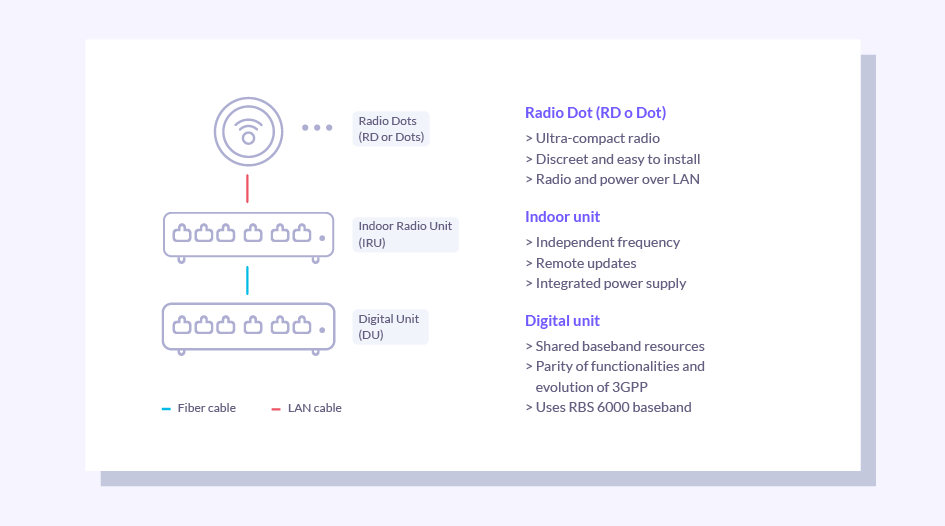
How to maximise the installation:
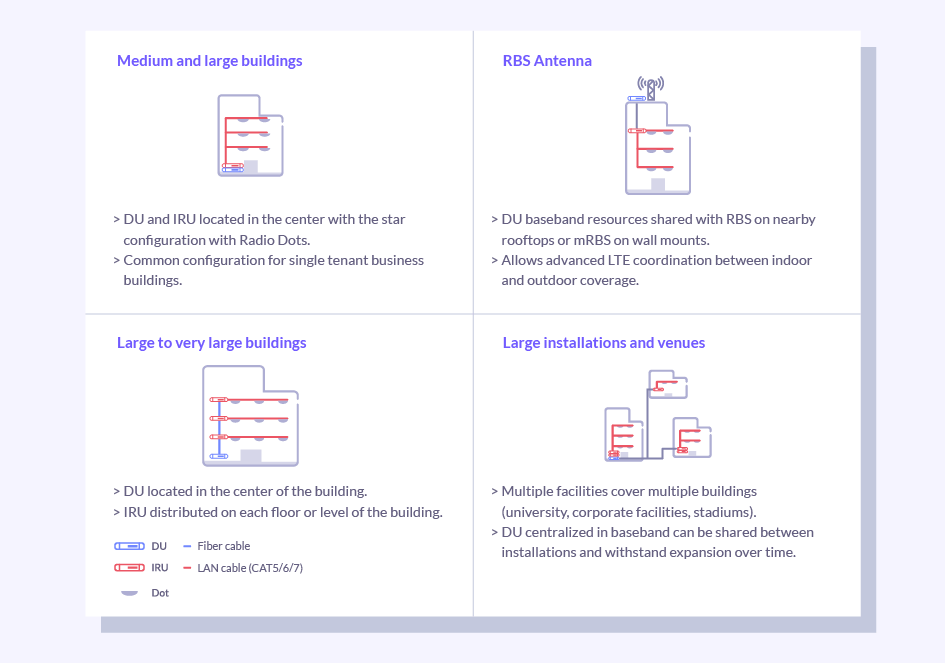
CONCLUSION
The cost of this scenario would be between 800,000 euros and 1,800,000 euros. However, the total change of equipment could be done in a staggered manner and, for example, in a first phase, only the access points in public areas could be changed to then continue with access points in rooms gradually. This will allow us to take on the cost progressively.
If we opt for a 100 % 5G installation we will become a de facto mobile operator that operates only in its hotel.
It should be noted the service provider will always offer the data and voice service: Movistar, Vodafone, Orange, Masmovil… So we will have to integrate our installation with each provider with the consequent additional cost.
We should consider the “neutral host” model , which consists of managing a network infrastructure to host (without imposing technical and economic restrictions) any entity that uses it to provide its services to its end-users.
In the model, the Neutral Host (the owner of the infrastructure, in this case the hotel) is the operator that develops and manages the network and offers network segments to the various 5G service providers that need them in the area. It is a way to monetise or recover part of the investment. But given the proposed cost, it is likely to be a very uneconomical solution.
In the case of an upgrade to WiFi 6, the equipment, both switches and access points, will have to be changed to adapt to the new traffic, performance and safety requirements.
With regard to cabling, no changes will be necessary, the cabling installed (CAT6A) is compatible with the new equipment and allows us to meet the traffic requirements.
CASE 2: HOTEL WITH 5G SPACES
In this case we will only have 5G coverage in specific locations. We could do it in our conference room, or the reception hall, cafeteria, business centre…
We will have to integrate our 5G installation with each provider in the same way, since the aim is that any user can connect to this network regardless of the mobile phone company they have.
HARDWARE
Radio Dot 5G (Ericsson) or Huawei’s 5G Digital Indoor System or ZTE Router 5G MC801.
CONCLUSION
In this case the investment is much more reasonable (between 6,000 euros) and the main problem will be to achieve integration with all telephone providers.
CASE 3: HOTEL WITH 5G INTERNET ACCESS
This is a very likely case.
Many hotels may take advantage of the arrival of 5G to upgrade or change their current internet access for a variety of reasons:
- Because they do not currently have a broadband connection and operate via ADSL or own radio link.
- Because they have a very expensive dedicated internet outlet and 5G allows them to maintain performance and reduce costs.
- Because we want to use it as a backup for when the main access fails.
5G provides up to 100 times more capacity than 4G networks.
A 5G FWA network eliminates the need for costly deployment of fibre-based access infrastructure and offers peak rates that few fixed technologies can match. 5G FWA can reduce the cost of connectivity compared with fibre.
Fixed Wireless Access (FWA) technology is becoming the most attractive commercial scenario for mobile operators and equipment manufacturers to leverage their investment and contribute to the growth of the offering at corporate and user level.
It is a system to leverage existing mobile networks to provide internet services to users at a fixed location. Fibre would no longer be the only option to download data fast without losing capacity, as wireless is easy to install. It could provide seamless connectivity with a high degree of flexibility, and cost savings by reducing capital and operating expenses.
According to some consultants, the capital costs associated with FWA technology would be up to 50 % lower than for FFTx technology as it does not require engineering works for the deployment of connecting cables. Moreover, operating costs could be reduced as operators share their mobile base stations and fixed wireless access, benefiting from economies of scale and getting a higher return on their investment.
Fixed wireless network:
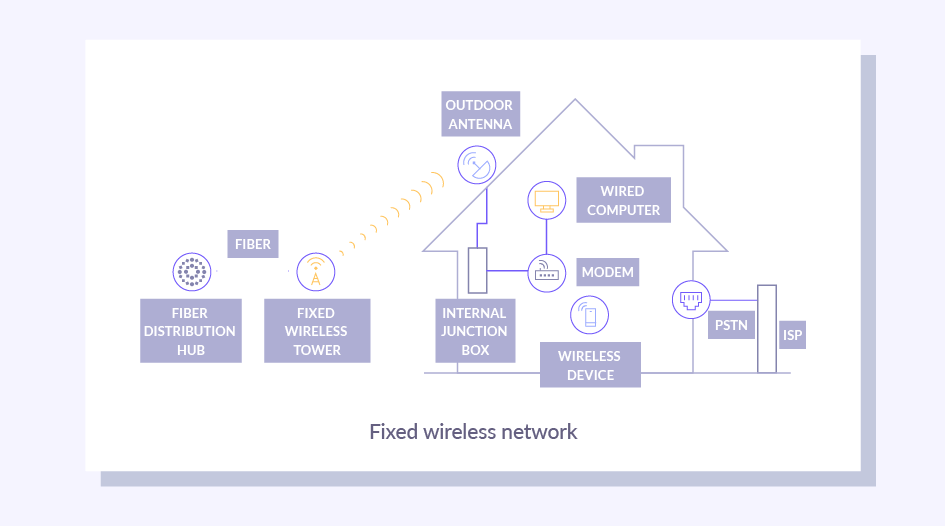
Fibre case diagram (FTTH) as a comparison:
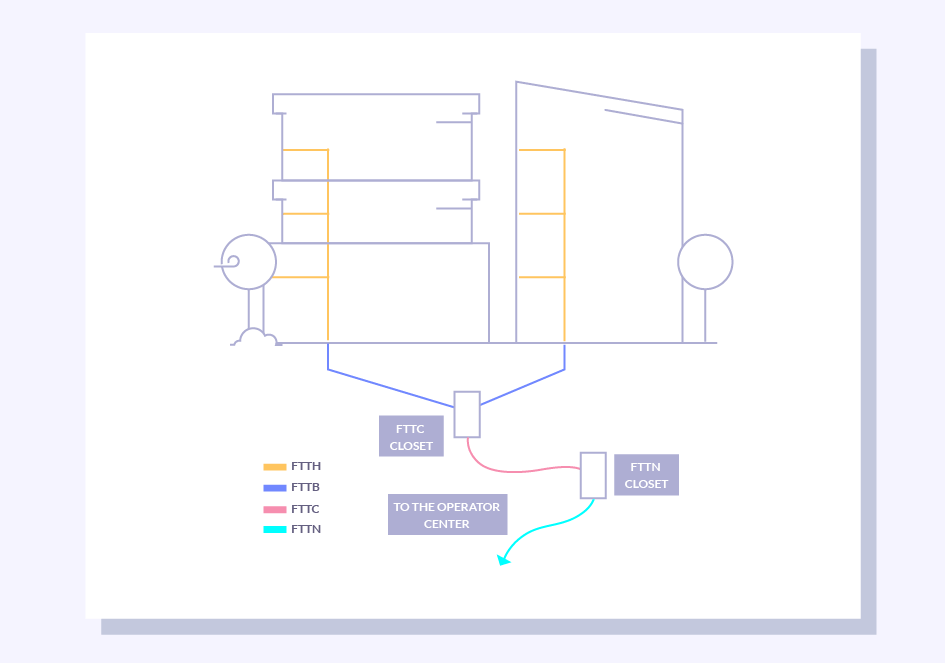
In this case, the mobile operator would be responsible for the installation and maintenance of internet access. Exactly the same as for fibre access.
It would give the possibility to rural or urban areas where fibre is not available yet, to have an equivalent internet access.
CASE 4: HOTEL WITH WIFI PROVIDING 5G OR EQUIVALENT SERVICE
Another likely case. Using the existing LAN and WiFi network to provide 5G service.
When we talk about providing 5G service, in this case, we mean using the existing infrastructure in the hotel to allow mobile operators to provide their service.
In this case, our WiFi network must meet the minimum performance requirements set by the manufacturers and there must be roaming between the mobile data network and the hotel’s local network. This will require integration of the internal network with the mobile operators’ network. The connection process is entirely transparent for the user, the switching between the two networks is done automatically by the mobile phone itself. It would be similar to travelling to another country, our mobile phone automatically connects to other networks with coverage.
Within this scenario, it may be the case that we are not interested in integrating with mobile service operators, then we can offer our WiFi service as 5G equivalent. That is, a fast, low-latency, high-availability connection. In this case, users should connect to our WiFi network.
For this, our network must meet the same minimum performance requirements. How?
- Reviewing the current state of the network at the installation, configuration and services level.
- Improving and making the necessary changes to meet the requirements of the services we want to offer and our customers’ expectations.
In all of the above cases we come to the same stumbling block: the hotel will have to integrate with the different telephone companies in one way or another to guarantee 5G coverage to all possible users regardless of the company where they have their data contracted.
This is an additional problem for the hotel and not everyone will be able to take on such an arduous task, which also requires a certain level of technical expertise.
Therefore, at Hotelinking we hope to act as a bridge between the operators and the hotel in the future, assuming these integrations with the telephone companies and at a much lower cost than it would be for an accommodation to do it directly with the operators. In this way, the hotelier will be able to offer their service without worrying about these integrations.
Notice: Assumptions are estimated examples. Each case may change depending on the property and in any case would require a tailor-made quotation.